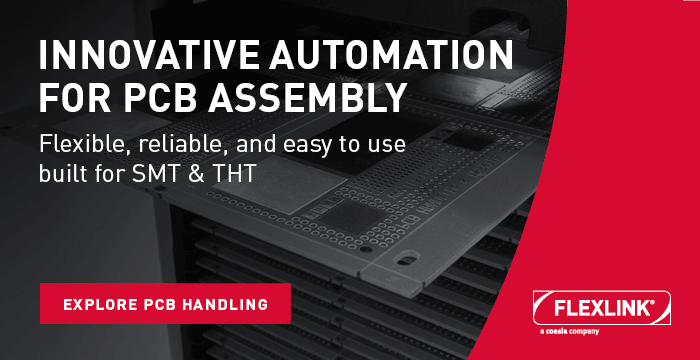
By Shawn Robinson
columns |
Leveraging existing assets through wise investments
To paraphrase an old saying, "Nothing's certain in a production environment but the technology requirements will change, and productivity must improve 10 to 20% annually, regardless of economic conditions."
After the post-2000 meltdown, companies are wrestling with how much financial exposure they are willing to assume, knowing economic conditions will soften (they always do). Production demands and environments are evolving, shifting from high-volume to high-mix. Such was the struggle recently for one of our customers.
Originally, the customer's production environment demanded dedicated product builds in high volume, and their gear set was optimized for this. The line was composed of multiple pieces of two vendors' pick-and-place machines. With these machines still on the books for a period of time, the transition to a higher product changeover environment coupled with new technology on upcoming products created various line bottlenecks. It was apparent the line would need to be reconfigured. Significant downtime was experienced whenever a product build exceeded 80% of a given shift, because the retooling of the line would occur during a shift change. This would cause reverification of the line inputs, transfer of production changeover information from one shift staff to the next, and in general extended the changeover to 2 to 2.5 times longer than it should normally take.
These types of situations always have a variety of factors that must be taken into account before decisions can be made:
1. Due to financial obligation of the machines still in the middle of their depreciation period and concern over fluctuating market indicators, the customer was not in a position to completely retool the line.
2. A means to either reduce the number of changeovers or make them more efficient when they were required could significantly boost output.
3. Increasing line output would help ensure that any production builds could occur in 80% of a shift, but increasing line length was not an option. Therefore, the focus turned to exchanging a single machine, but which one to replace?
4. All equipment has its strengths and weaknesses. Understanding how these strengths and weaknesses can be complemented is where to focus effort. In this particular case, significant feeder capacity was consumed by duplicating high-running components. This was because the high-volume equipment already in place was now being used in a higher-mix environment.
Solution: There is more than one way to skin the proverbial cat. Some problems can be resolved via a small investment, rather than a retooling of an entire line. In this case, a single piece of gear enabled the customer to recapture approximately 15% of the previously consumed feeder capacity. Loading more products on the line with a common feeder setup reduced the number of changeovers. (Moreover, while it is often argued that line volume is not as relevant in higher mix environments because changeover time becomes more of a factor, there are cases where both can be achieved and with minimal investment, by leveraging existing gear and without extending the line length.)
Nothing in life is free, and such is the case here. Inserting a new machine could change a line from single to mixed vendor. If the decision is made to add a vendor, the need for line-level software that can accommodate multiple vendors must be considered. When new equipment is selected, can any of the previous equipment's hardware, such as feeders, be leveraged? In addition, redispositioning or replacement of a machine (as was required in this case) must be justified.
By Shawn Robinson,
Universal Instruments
Universal Instruments


